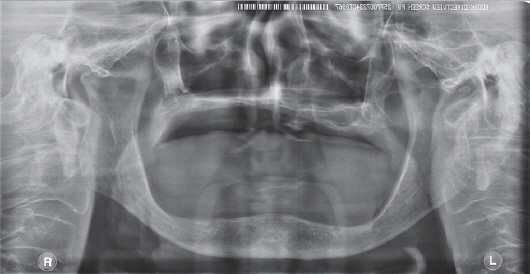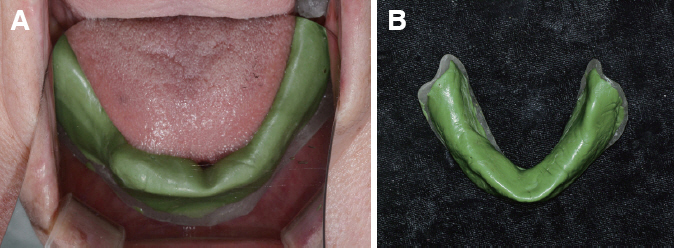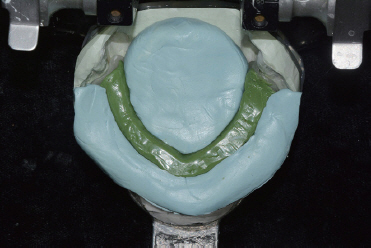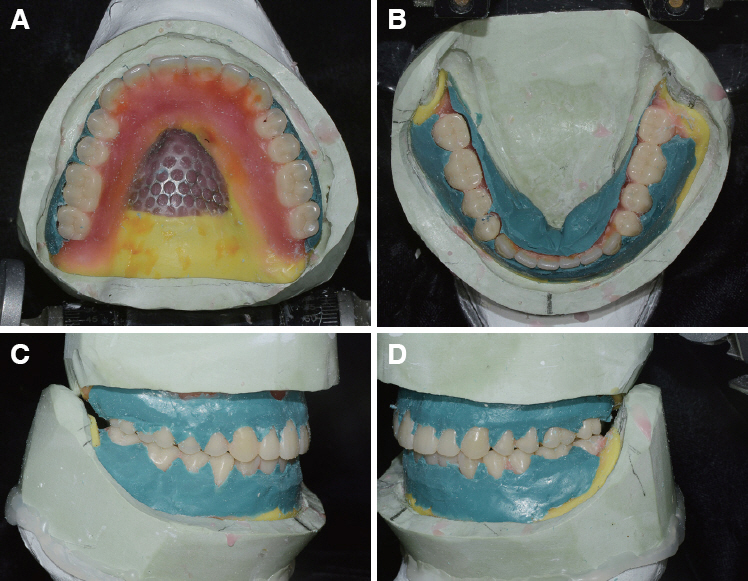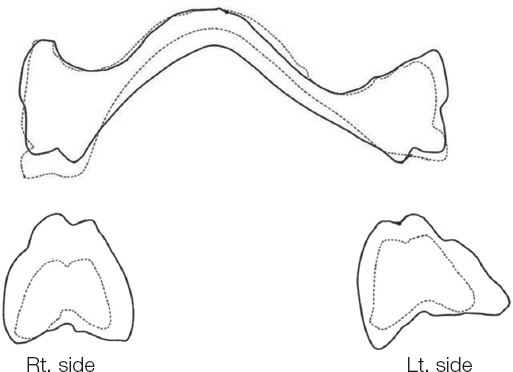J Dent Rehabil Appl Sci.
2018 Dec;34(4):324-330. 10.14368/jdras.2018.34.4.324.
Neutral zone approach and external impression for rehabilitation of severely atrophic maxillary and mandibular ridges: a case report
- Affiliations
-
- 1Department of Prosthodontics, School of Dentistry, Chonnam National University, Gwangju, Republic of Korea. mcnihil@chonnam.ac.kr
- KMID: 2432369
- DOI: http://doi.org/10.14368/jdras.2018.34.4.324
Abstract
- In order to produce a stable denture for severe alveolar bone loss area, it is not only important that .0a suitable occlusion is established but also to consider compatibility with the surrounding muscle to form a suitable polished surfaces. Neutral zone is defined as a potential area where the neuromuscular system of the tongue, cheeks and lips is balanced can be determined through the neutral zone impression technique. And if artificial teeth are aligned within the neutral zone and the polished surface follows the anatomical form of the dynamic muscle, higher stability and retention of the denture may be obtained through coordination with the surrounding muscle tissue. This case is being reported since the concept of the neutral zone was applied to a patient with severely atrophic residual alveolar ridge and the result was clinically satisfactory in both function and aesthetics.
Keyword
MeSH Terms
Figure
Reference
-
References
1. Beresin VE, Schiesser FJ. The neutral zone in complete dentures 1976. J Prosthet Dent. 2006; 95:93–100. DOI: 10.1016/j.prosdent.2005.10.005. PMID: 16473080.2. Beresin VE, Schiesser FJ. The neutral zone in complete and partial dentures. 2nd ed. St. Louis: CV Mosby;1978.3. Lammie GA. Aging changes and the complete lower denture. J Prosthet Dent. 1956; 6:450–64. DOI: 10.1016/0022-3913(56)90090-7.4. Kokubo Y, Fukushima S, Sato J, Seto K. Arrangement of artificial teeth in the neutral zone after surgical reconstruction of the mandible: a clinical report. J Prosthet Dent. 2002; 88:125–7. DOI: 10.1067/mpr.2002.127951. PMID: 12397236.
- Full Text Links
- Actions
-
Cited
- CITED
-
- Close
- Share
- Similar articles
-
- Neutral zone approach for rehabilitation of severely atrophic maxillary and mandibular ridges: A case report
- Functional impression technique using temporary denture for rehabilitation of severely atrophic maxillary and mandibular ridges
- Neutral zone and alveolar relation consideration for fabricating complete denture in a patient with severe alveolar bone resorption: a case report
- Neutral zone approach and external impression for rehabilitation of macroglossia: a case report
- Neutral zone approach for rehabilitation in a patient who underwent mandibulotomy: A case report

